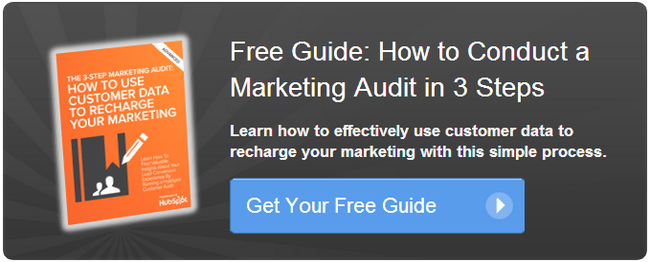 Real-timeproduct demosare a powerful tool for driving sales, especially when you can put one directly on your homepage. Demos do a lot of heavy lifting for you -- mainly, they combine complex ideas into simple, interactive experiences. As the age-old saying goes, “Seeing is believing.”
Real-timeproduct demosare a powerful tool for driving sales, especially when you can put one directly on your homepage. Demos do a lot of heavy lifting for you -- mainly, they combine complex ideas into simple, interactive experiences. As the age-old saying goes, “Seeing is believing.”
Here’s how we over-complicated our homepage demo for a very long time for my company, Friendbuy -- and how we eventually quadrupled the number of visitors who interacted with our product by simplifying thecall-to-action.
Background on Our Product
First, a little background on the company. Friendbuy enables marketers to create referral programs and drive customer acquisition. With Friendbuy, you can quickly deploy referral widgets anywhere, measure success, and optimize.
For example, a marketer can place a banner on the homepage, which activates a referral widget as an overlay (to see a premier example of this execution, check out the homepage forwww.NatureBox.com).
Naturally, we figured we’d run a live demo of a Friendbuy widget directly on our own homepage. After all, seeing is believing, right? Here’s the original banner that we ran on our homepage for nearly a year:

Here’s how the banner appeared on our homepage:

And here’s the demo widget that appeared after clicking the banner:

All a visitor had to do was click the banner to experience our product firsthand ... but what we found was very few did. Specifically,only 1.44% of visitors clicked.
Now, a 1% CTR for any run-of-the-mill banner is actually not too bad. In this case, though, it was for a product demo, and presumably, thehomepage visitorcame to the page precisely to learn about Friendbuy products. Further, the placement of our banner -- above the fold and in proximity to client logos -- should've yielded a higherclickthrough rate.
We knew we needed to make a change to the CTA, and so, we decided to conduct an A/B test and find a way to improve our CTR.
A/B Test for Our CTA
Here's what we hoped to achieve byA/B testingtwo different alterations to this CTA to determine if there would be a better option for our homepage:
- Goal:Get more visitors to demo Friendbuy’s referral widget.
- Hypothesis:The call-to-action is complicated and indirect.
- Approach:We replaced the original banner with a 50/50 rotation of two new versions, focused entirely on testing calls-to-action and foregoing aesthetic concerns.
变体1”按钮:“对其进行测试。”

Variant 2 Button: “See demo.”

Results
- Baseline (original) CTR: 1.44%
- Variant 1 CTR: 2.47% (71% improvement over baseline)
- Variant 2 CTR: 4.49% (82% improvement over variant 1, and 211% improvement over baseline)
Conclusions
- Original CTA was vague, complicated, and reduced engagement.
- 变体1提供了清晰的方向,因为它引导visitors to take action by clicking.
- Variant 2 provided clear direction and included the word ‘demo,’ which is a well-defined term and tacitly understood by everyone.
- By meeting visitor expectations, Variant 2 outperformed all other calls-to-action in this test.
So there you have it -- a very simple test that immediately increased the effectiveness of our call-to-action. To learn more about constructing an amazing call-to-action,check out this in-depth post.
Tony Mariotti is Vice President atFriendbuy, the marketing platform that makes it really easy to launch a customer referral program. A/B test and optimize your refer-a-friend program without developer headaches. To learn more about the latest strategies for customer acquisition, you can follow Friendbuy onTwitter.
Originally published Nov 18, 2013 4:00:00 PM, updated February 01 2017
Topics:
Calls to ActionDon't forget to share this post!
Related Articles
![How the HubSpot Blog Generates Leads [+ How Yours Can, Too]](http://www.eigoj.com/hubfs/lead%20generation-Jan-04-2021-03-53-13-02-PM.jpg)

Expand Offer
Social Media Content Calendar Template
Get it now